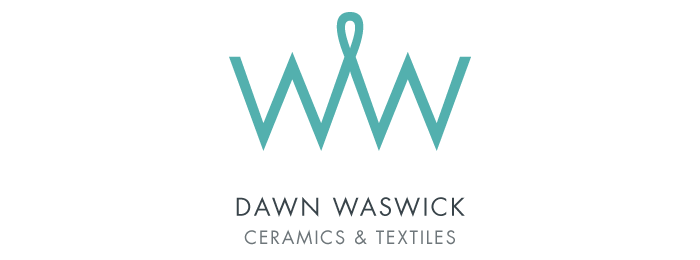Ceramics
As my ceramics are all handmade in my small backyard studio no two pieces will be exactly the same. Slight variances in size and shape are part of what makes buying handmade pieces so joyful, the piece you buy is uniquely yours.
The glazes I use for my functional pottery are all food-safe and can be put in the dishwasher and microwave, however, the high alkalinity of dishwasher detergent can have a detrimental effect to the glazes over time so I do recommend hand washing whenever possible.
Like glassware, though to a lesser extent, ceramics can break due to thermal shock, please take care to not pour boiling water into a frozen cup.
Weaving
All of the woven products offered are handwoven by me on an 8-shaft Louët David floor loom.
Philosophy
I strive to work in the most ethically sound and environmentally friendly way that I can. To this end, I:
- minimize waste by dying yarn according to project needs instead of in bulk quantities. This means that I have only small amounts of yarn left at the end of a project, which I then incorporate into other projects as design elements, felt into dryer balls, or donate to other makers for use in their craft.
- source locally produced yarn where possible, choosing international products only where there is not a product of similar quality available locally.
- use sustainable and cruelty-free materials including:
- wool sourced from ethical farms
- tencel (lyocell) which is a cellulose fibre manufactured using non-toxic chemicals in a closed-loop system, where the majority of the chemicals and water used are recycled and reused
- linen.
- hand-dye with natural dyes or low-impact fibre-reactive dyes.
- buy undyed yarn in cones instead of skeins to reduce wastage and keep costs down.
Dye process
I hand-dye the yarn myself in a laborious process that starts with winding the entire warp and measuring out the amount of weft yarn needed for the project. I choose to wind the warp first and dye that because I intentionally make the colour dye unevenly; the end result is an ikat-like effect in the finished product.
Each colour is then dyed separately using low-impact fibre reactive dyes. The yarn is weighed and a precise amount of dye is used to ensure as much as possible is taken up by the yarn.
After the yarn is dyed the warp is rewound to accommodate any stripes in the warp and the weft yarn is wound into balls, and then onto bobbins for weaving.
While I absolutely could use pre-dyed yarn (and I have for some commission projects) dyeing the yarn myself allows me to control each step of the process and makes every one of my products completely unique.
